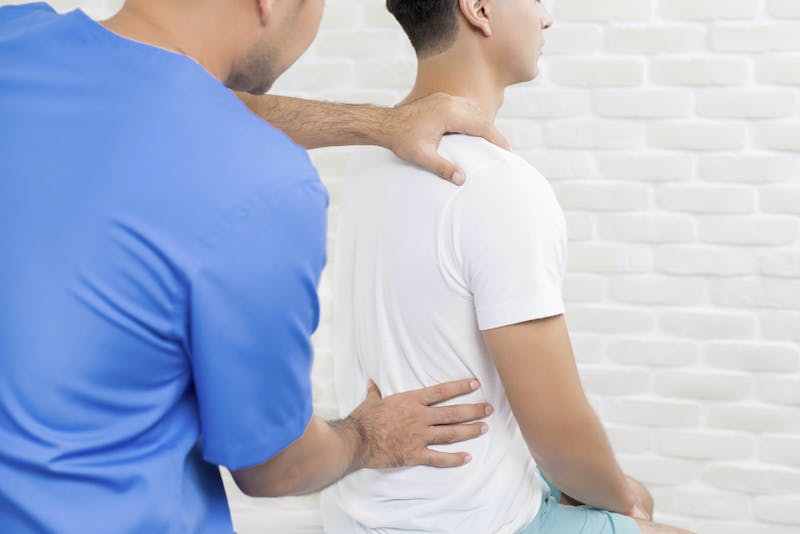Exercises Intended To Correct Posture Can Effectively Address Painful Conditions
In our last blog, we explained what posture is and reviewed some of negative consequences of practicing poor posture, with a particular focus on forward head posture and rounded shoulders. We also pointed out that many modern habits—like sitting at a desk and using a computer or smartphone—are big contributors to poor posture because these activities encourage improper alignment of the spine and other body parts.
Technology Often Doesn’t Promote Good Posture
If you use a computer for work or tend to spend lots of time on your phone, it might be easy to see why this is the case. Working on a computer requires being in a seated position for extended periods every day, and it’s difficult to maintain proper posture for all—or even most—of this time. Instead, many individuals tend to change their posture frequently throughout the day by slouching, leaning too far back, or crossing their legs to stay comfortable.
Repeated Positions Lead to Bad Habits
The longer the body is out of postural alignment, the easier it becomes to continue these habits, and the greater the risk grows for pain and deformity. Over time, poor postural habits can negatively affect the bones, muscles, and joints supporting the spine and lead to imbalances that limit movement and make normal exercise difficult. Poor posture will also prevent these supporting structures from functioning properly and can go on to cause appearance issues, musculoskeletal pain, and physical restrictions.
Investigating posture-correcting exercises for pain
This highlights the importance of practicing good posture to maintain the proper arrangement, balance, and function of the body’s structures, and shows why taking steps to correct posture are key to optimal overall health. With this in mind, a study was conducted to evaluate the effectiveness of an exercise program designed to correct posture on patients with musculoskeletal pain.
Patients with various types of musculoskeletal pain were screened for inclusion, and 88 of those screened were included in the study. Each of these patients completed an exercise program, which consisted of three 20-minute sessions per week for eight weeks. The first week of the program included stretching exercises intended to improve flexibility of the calves, spine, shoulders, and other regions of the body. The remaining seven weeks included a variety of additional exercises and activities designed to correct posture, such as a lower muscle strengthening exercise, an abdominal muscle strengthening exercise, and head and neck stretching exercise. These patients were assessed before and immediately after the exercise program for pain levels in the neck, shoulders, middle back, lower back, and pelvis by using a 10-point scale.
Physical Therapist Guided Exercise Again is Helpful
Results indicated that the average pain scores were lower after the exercise program in all regions of the body assessed. Of these, the values for shoulder pain, middle back pain, and lower back pain were statistically significant, meaning that these improvements were important enough to support the effectiveness of this intervention. Based on these findings, it appears an exercise program that focuses on correcting posture can alleviate pain in patients with various types of musculoskeletal pain. Physical therapists are movement experts and professionals at identifying postural faults and addressing them with appropriate, individualized exercise programs.
We Can Help You Correct Posture Problems
Therefore, if you’re currently suffering from pain of any sort that may be related to your posture, we strongly encourage you to come in and see us for an evaluation. Contact Bacci & Glinn Physical Therapy at 559-733-2478 (Visalia) or 559-582-1027 (Hanford) to schedule an appointment today.

